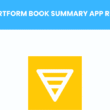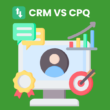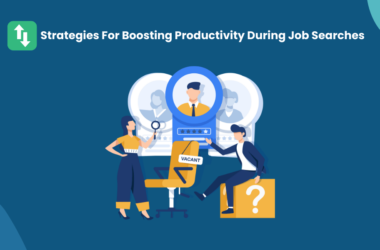Table of Contents Show
In our exploration of “Data Analytics Visualization Techniques to Boost Productivity,” we embark on a journey to unravel the intricacies of visualizing data and its profound impact on organizational success.
From interactive dashboards to immersive graphics, this exploration delves into the diverse array of visualization techniques that have the potential to turn raw data into actionable intelligence.
As we navigate this landscape, we will uncover how these techniques not only streamline processes but also empower teams to make strategic, data-driven choices that can redefine the very essence of productivity.
Why Data Analytics Visualization is Important for Productivity?
Digging deeper into the realm of productivity, the role of data analytics visualization becomes clear. It’s more than just presenting data; it’s a pathway to more informed decisions, boosting employee efficiency and ultimately enhancing productivity.
Effective data visualization translates complex data into actionable insights, serving as a bridge to enhanced productivity through informed decision-making.
Moving from the abstract realm of raw data to the actionable sphere of well-analyzed information, effective data visualization serves as a critical bridge. It translates complex data into digestible, visual representations that guide strategic action, turbocharging productivity in the process.
a. Understanding the connection between data and productivity
Data plays a monumental role in enhancing business productivity. It fuels informed decisions and strategic planning by delivering insights into various operational aspects. Essentially, an improved understanding of data can facilitate effective resource utilization and time management.
Data interpretation bridges the gap between mere numbers and actionable insights. It unveils correlations, trends and patterns that would otherwise remain obscured. Essentially, when data interpretation is done well, it crystallizes the path to heightened productivity.
b. The power of visual representation in data analysis
Deciphering the might of visual modeling takes us further beyond numbers and spreadsheets. It empowers us to comprehend, interpret, and delve into hidden insights which significantly enhances decision-making and thus, productivity.
Visualizing the invisible means giving tangibility to abstract concepts of data analysis. Through pictorial representations, mundane data are transformed into digestible information, making it easier to grasp relationships, patterns, and trends. This visual approach catalyzes productive outcomes.
Choosing the Right Data Visualization Techniques
The art of selecting the right data visualization methods is an endeavor of decoding. It hinges on a profound understanding of your project’s goals and an open exploration of visualization options, deftly turning data into myriads of measurable insights.
1. Identifying the goals and objectives of your analysis
To amplify the impact of your data analysis, it’s essential to establish a clear set of goals and objectives from the start. This strategic approach paves the way for efficient data handling, ensuring you’re focusing on meaningful metrics that drive productivity.
Here is how to do it:
- Identify specific key performance indicators (KPIs) aligned with your business goals
- Determine the kind of information necessary for making strategic decisions
- Specify the target audience who will base their decisions on the data analysis
- Decide the appropriate timeframe for data collection and analysis
2. Exploring various types of data visualization tools
In the quest for better productivity, choosing the right data visualization tools is paramount. Considering the myriad of available tools, understanding their unique offerings, and aligning them with your specific needs can significantly enhance your output.
- Identify the exact use case: Different tools cater to specific needs, e.g., business intelligence, marketing analytics, or data science exploration.
- Consider the learning curve: Tools like PowerBI, Tableau, and QlikView require a learning period, but offer extensive capabilities.
- Look at the integration capabilities: Tools which can seamlessly integrate with your existing systems save time and effort.
- Understand the data handling abilities: Large volumes of data need robust tools like D3.js or Highcharts.
- Evaluate the customization possibilities: Personalizing your data dashboards for specific needs makes the visualization more impactful.
3. Utilizing charts and graphs for effective communication
Leveraging Charts and Graphs can revolutionize the way you communicate within your organization. They are a powerful tool that aids in the digestion and translation of complex data, turning it into a dialog that encourages productive interactions within your team.
- Identify the type of data to visually represent – bar graph, line chart, pie chart or scatter plot.
- Use color-coding strategically to help distinguish different data sets.
- Add clear labels and legends to enhance understanding.
- Choose the right scale and intervals to accurately represent data.
- Consider using interactive charts and graphs for deeper analysis.
4. Using dashboards to monitor key metrics in real-time
Dashboards shift your perspective of metrics by serving as command centers for real-time success measures. Key indicators previously scattered across various platforms are now in one visually appealing, easy-to-navigate space for better decision-making.
Experience the power of now—through real-time dashboard monitoring, you harness dynamic capabilities that allow you to detect trends and act instantly. It’s no longer about yesterday’s data; it’s about leveraging today’s insights for amplified productivity.
Dashboards that monitor metrics in real-time aren’t just about watching numbers change—they’re about deep, actionable insights. This real-time clarity drives agile responses, keeping businesses proactive in dynamic markets and powering peak productivity.
Data Analytics Visualization Best Practices for Productivity
Rules of engagement in data analytics visualization significantly enhance productivity. Best practices include simplifying complex data with visual storytelling, designing clean, intuitive visuals, and ensuring data accuracy and consistency.
Adherence to these visualization best practices can revolutionize productivity. This approach allows for immediate comprehension of complex data, expedited decision-making, and ultimately, a more effective and efficient management system.
1. Simplifying complex data through visual storytelling
Visual storytelling, a gem in data analysis, eases the comprehension of complex data. Unravel a captivating narrative from your intricate data through visuals, enabling your team to grapple with the bloat and find relevant insights swiftly.
Transforming intricate data? It’s like transforming crude drawings into a masterpiece; visual narratives transform complicated data into understandable, meaningful stories. It’s more than just pretty graphics; it’s about creating a coherent dialogue that drives productivity.
Ensuring clarity amidst complexity is pivotal for productivity. With visual storytelling in data analysis, you unveil the essence of your data, weaving it into an engaging narrative. Resultant clarity propels decision-making, catapulting productivity to new heights.
2. Designing clean and intuitive visualizations
Crafting neat and easy-to-understand visualizations isn’t an overnight skill, but mastering this art invariably paves the way for enhanced productivity. It aids in filtering out the noise from data, rendering it feasible for managers to make swift, informed decisions.
When visual data representation is uncluttered and intuitive, data comprehension becomes swift and effortless. This reduces the cognitive load on the audience, enabling them to glean valuable insights without being overwhelmed.
Moreover, user-friendly designs in visualizations enhance the appeal of analytics to those who might shy away from raw data. This encourages broader participation in data-driven decision-making, thereby creating an environment of shared productivity and innovation.
3. Ensuring data accuracy and consistency in visualizations
Avoiding inaccuracies in data visualizations is paramount in driving productivity. Tailoring your checks against junk data and standardizing visualization formats helps build a grounded, reliable framework for decision-making.
Consistent data visualizations cultivate trust; they accurately reflect your enterprise’s operations. Accuracy helps in eliminating guesswork, and developing only the most effective strategies, thereby optimizing productivity.
Smart businesses leverage accurate, reliable data visualizations to ramp up productivity levels. A complete, dependable view of your data harnesses the full potential of your resources, streamlining your processes for comprehensive efficiency.
4. Leveraging interactive features for dynamic analysis
Deploying interactive features in data visualizations greatly enhances the effectiveness of analysis, giving you a more comprehensive understanding of your data. These tools make your data come alive, allowing you to manipulate them and see changes in real time to make more informed decisions swiftly.
Powerful interactive data visualizations are real game-changers when it comes to business productivity. They remove the traditional, static limitations, encouraging a more engaging examination of crucial metrics which inevitably leads to improved efficiency and performance.
Incorporating interactivity into your data visualization approach is like unlocking a new dimension in your data. This enables you to see a dynamic image, a ‘movie’ of your data instead of just a ‘snapshot’. In essence, you’ll delve deeper into your insights and find paths to productivity you never knew existed.
Conclusion:
In this blog, we find ourselves at the intersection of innovation and practicality, where the synergy of data analytics and visualization proves to be a transformative force.
This journey has taken us through the corridors of information, revealing how visualizing data transcends the boundaries of traditional analysis and becomes a dynamic engine for productivity.
At its core, the fusion of data analytics and visualization is more than just a technological advancement; it represents a shift in organizational mindset. Share your feedback in the comments below.
Read more:










